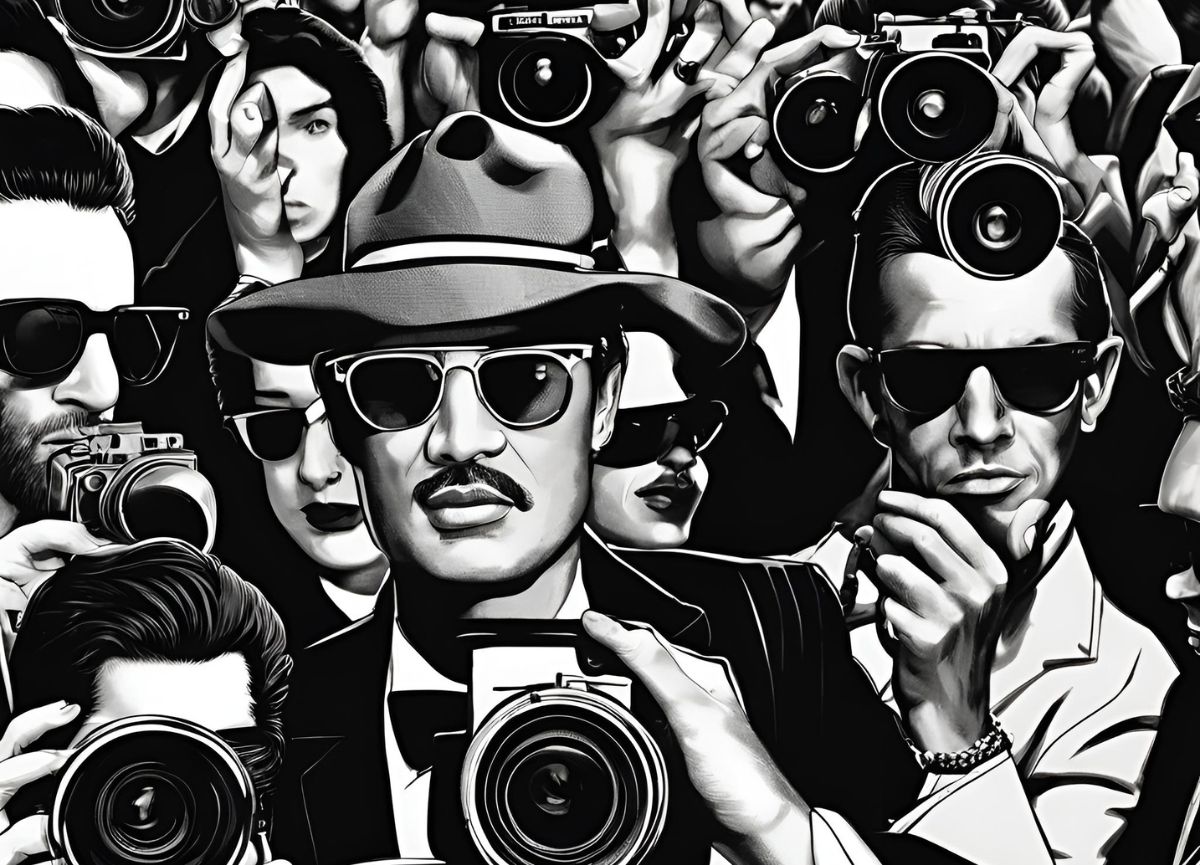In the glittering world of fame and fortune, a shadow looms large—the ever-present paparazzi.
These relentless photographers have become an integral part of celebrity culture, shaping public perceptions and influencing media narratives.
This article delves into the origins and evolution of paparazzi culture, exploring its profound impact on celebrities and society at large.
The Birth of the Paparazzi
The term “paparazzi” burst onto the scene in the 1960s, coined by Italian film director Federico Fellini in his iconic film “La Dolce Vita.”
The character Paparazzo, a persistent freelance photographer, gave birth to the now-familiar term.
However, the roots of celebrity photography stretch back to the 1950s, when photographers like Tazio Secchiaroli began aggressively pursuing candid shots of the rich and famous in Rome.
In those early days, Hollywood studios tightly controlled their stars’ images.
Celebrities emerged as flawless beings, shimmering with glamour and leading seemingly picture-perfect lives.
But as the media’s appetite for gossip and scandal grew, this carefully crafted illusion began to crumble.
The Rise of Tabloid Culture
The 1970s saw the rise of tabloid journalism, which further fueled the demand for paparazzi photographs.
Publications like the National Enquirer, People, and Us Weekly thrived on scandalous stories and candid shots of celebrities.
The paparazzi became indispensable to these tabloids, providing exclusive images that drove sales and readership.
One watershed moment came in 1977 when the National Enquirer published a photo of Elvis Presley in his casket.
The issue sold a staggering seven million copies, setting a new standard for tabloid sensationalism.
The “Just Like Us” Era
In 2002, Us Weekly editor Bonnie Fuller had a lightbulb moment that revolutionized celebrity news.
Spotting a photo of Drew Barrymore picking up a penny, Fuller coined the phrase “Stars—They’re Just Like Us!”
Suddenly, candid shots of celebrities doing mundane tasks became hot commodities, fetching between $5,000 and $15,000 each.
This shift ushered in the “paparazzi gold rush.”
Photographers flocked to the industry, willing to go to extreme lengths to capture that perfect shot.
The line between public interest and invasion of privacy became increasingly blurred.
The Dark Side of Fame
As paparazzi culture intensified, so did its negative impact on celebrities. The constant intrusion led to numerous high-profile incidents:
- In 1997, Princess Diana tragically died in a car crash while being pursued by paparazzi in Paris.
- In 2007, Britney Spears suffered a public mental health crisis, partly attributed to the relentless paparazzi pressure.
- Numerous celebrities, including Kristen Bell and George Clooney, have spoken out about the traumatic effect of paparazzi on their children.
These incidents highlighted the human cost of our insatiable appetite for celebrity content.
The Digital Revolution
The advent of digital technology and social media in the 21st century revolutionized paparazzi culture.
High-quality cameras, smartphones, and the internet made it easier for paparazzi to capture and disseminate images instantly.
Social media platforms amplified paparazzi photos’ reach while allowing celebrities to share their content directly with fans.
This shift created a constant stream of celebrity news, blurring the lines between public and private life even further.
It also democratized the paparazzi industry—now, anyone with a smartphone could potentially capture a viral celebrity moment.
The Economic Realities
While some exclusive celebrity photographs can command huge sums, earning a steady income in the paparazzi industry has become increasingly challenging.
The global financial crisis and the rise of online media killed the “gold rush” era.
Photo agencies began to consolidate or go out of business, and the remaining ones changed their business model to subscription services.
As a result, paparazzi earnings have plummeted.
An exclusive “Just Like Us” photo that once fetched $5,000 to $15,000 now pays only $5 or $10.
Many photographers who once enjoyed six-figure incomes have left the industry altogether.
The Ethical Debate
The paparazzi industry continues to spark heated debates about privacy, ethics, and the price of fame.
While some argue that celebrities forfeit their right to privacy by choosing a public life, others contend that everyone deserves basic respect and personal boundaries.
Some jurisdictions have enacted laws to protect celebrities from harassment, particularly when children are involved.
However, the global nature of media and the internet makes enforcement challenging.
The Future of Paparazzi Culture
As we move further into the digital age, the future of paparazzi culture remains uncertain.
Social media has allowed celebrities to take control of their narratives, potentially reducing the demand for unauthorized candid shots.
At the same time, the public’s appetite for behind-the-scenes glimpses of celebrity life shows no signs of waning.
The COVID-19 pandemic temporarily disrupted paparazzi activities, with lockdowns limiting celebrity outings.
As the world adapts to new realities, so too will the paparazzi industry.
Conclusion
The history of paparazzi culture is a complex tapestry woven from threads of celebrity, media, technology, and society.
It reflects our collective fascination with fame and our sometimes problematic relationship with those in the public eye.
As we continue to navigate the evolving landscape of celebrity culture, it’s crucial to strike a balance between public interest and personal privacy.
The paparazzi may have forever changed how we view celebrities, but it’s up to us as a society to determine the ethical boundaries of our curiosity.
In the end, the story of the paparazzi is not just about photographers and celebrities—it’s a mirror reflecting our own values, desires, and the ever-changing nature of fame in the modern world.




